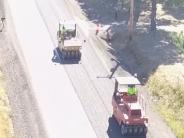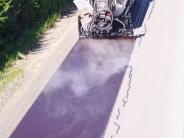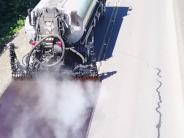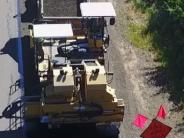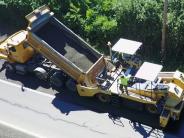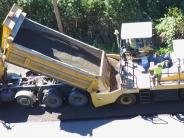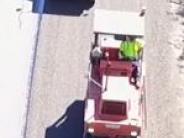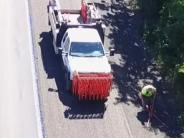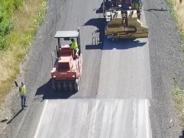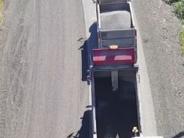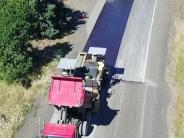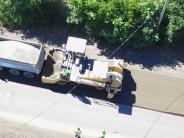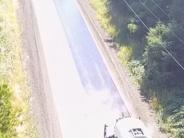Chip Seals
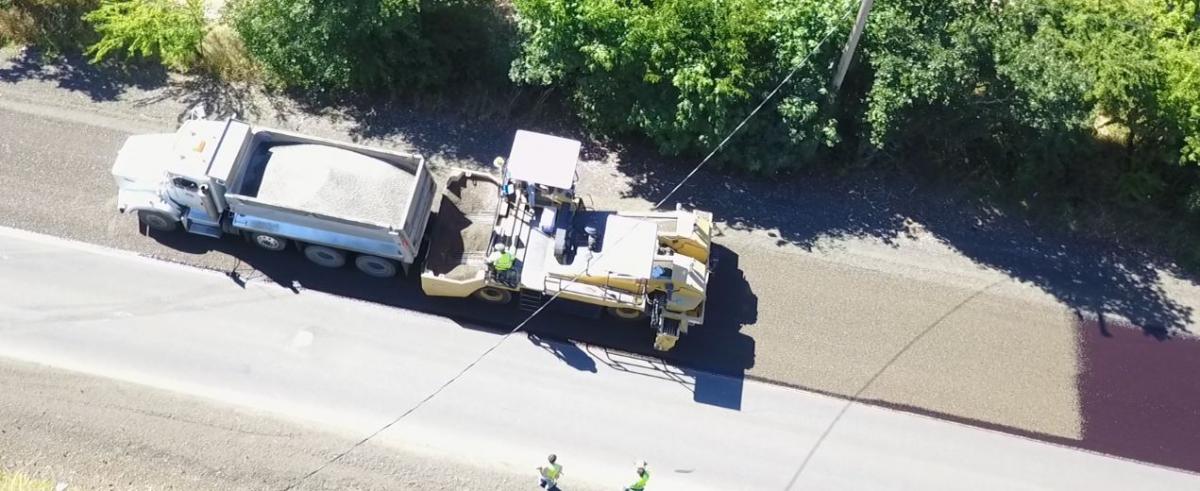
Annual Chip Seal Program
Between 2006 and 2008 Polk County paved approximately 180 miles of county roads. The time has now come to apply preventive maintenance to these roads in order to protect the public investment in the most cost-effective manner.
Chip sealing is a key part of Polk County’s preservation program to maximize the life of these roads and is used in cities and counties across the country.
Each summer, Public Works crews refurbish several County roads with a new layer of gravel and emulsified asphalt. This process, called chip sealing, is done annually on various roads throughout the County. The treatment extends the life of each road by seven to ten years and provides a new sealed surface, at a fraction of the cost of a standard asphalt overlay.
Locations and Notifications
All work is dependent on scheduling, weather and other factors. The County may post notices in local newspaper as well as on the Polk County Public Works website, which will be updated as information becomes available.
Chip Seal Process
Emulsified asphalt is sprayed onto the road, followed by a layer of crushed rock, creating a chip seal. Some loose gravel will remain on the road for several days, so speed limits of 25 mph will be in effect during this time. Driving slowly will minimize loose gravel being thrown from tires and it also helps compact the road surface. Please remember that fines for speeding are doubled in construction zones.
Crews will return the day after chip sealing to sweep up loose gravel, followed by additional sweepings over the next week. The final step is applying an emulsion and water-based fog seal. This process provides an additional surface seal and better rock retention. It also creates a good contrast for lane striping and other pavement markings.
Advantages to Chip Sealing
- Small cracks and distresses in the asphalt lead to bigger problems. A new seal prevents water saturation and extends road life.
- Vehicles can drive on roads within a few minutes after chip sealing.
- Chip seals are a proactive and cost-efficient preservation process used nationwide.
What You Can Expect
Drivers - During treatment, roads will be reduced to one lane of traffic. Drivers should expect some delays, but roads can be driven on a few minutes after chip sealing. All lanes will be open to reduced-speed traffic at the end of each work day. DO NOT DRIVE ON FRESH OIL
Pedestrians/Bicycles - Pedestrian and bicycle traffic is not permitted in the area due to safety concerns. There are many pieces of equipment involved with this fast-moving operation and it is simply not safe for pedestrians or bicycles to be in the vicinity. In addition, the oil used is extremely difficult to remove from shoes, clothing and/or tires.
Residents - As the operation passes your property, there may be a window of time in which you cannot exit your driveway. Typically, this will not exceed 15 minutes. When you are able to exit, be sure to avoid turning the steering wheel while your car is stationary or accelerating too quickly, this will likely result in the tires becoming coated in oil, which may transfer to your car.
Farmers - Keep in mind, the road width in the vicinity of the operation is reduced to a single lane. This means large equipment may not be able to pass the operation. Be sure to check our website for scheduling and have someone preview the route when moving equipment between locations.
What Can You do to Prevent Vehicle Damage
- DRIVE SLOWLY for a week to avoid loose gravel that can chip windshields and paint.
- AVOID making excessively sharp turns or sudden acceleration/deceleration which may cause unexpected skidding or sliding on the new surface.
- PARK AWAY from roads being chip sealed.
- DO NOT DRIVE ON FRESH OIL.
Thank You
We realize chip sealing can create some inconvenience for residents, pedestrians, motorists and businesses. The County thanks you for your patience and cooperation during this work.
Click any thumbnail image to view a slideshow

